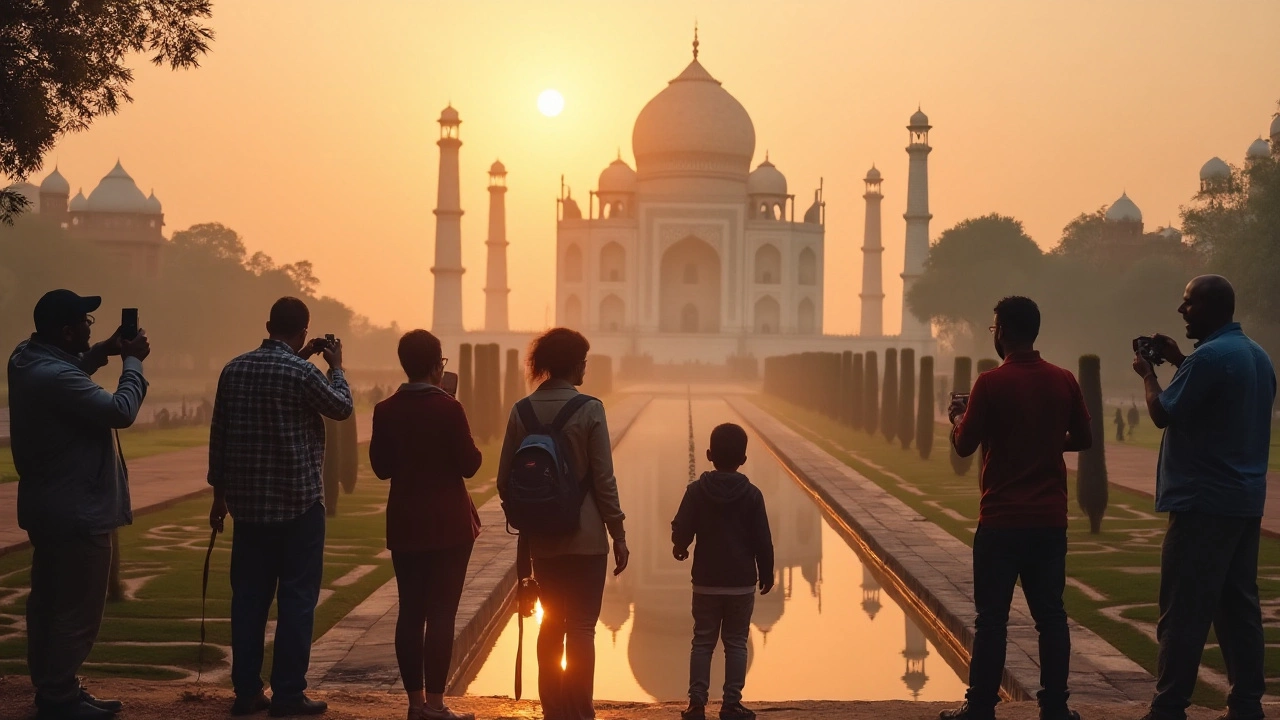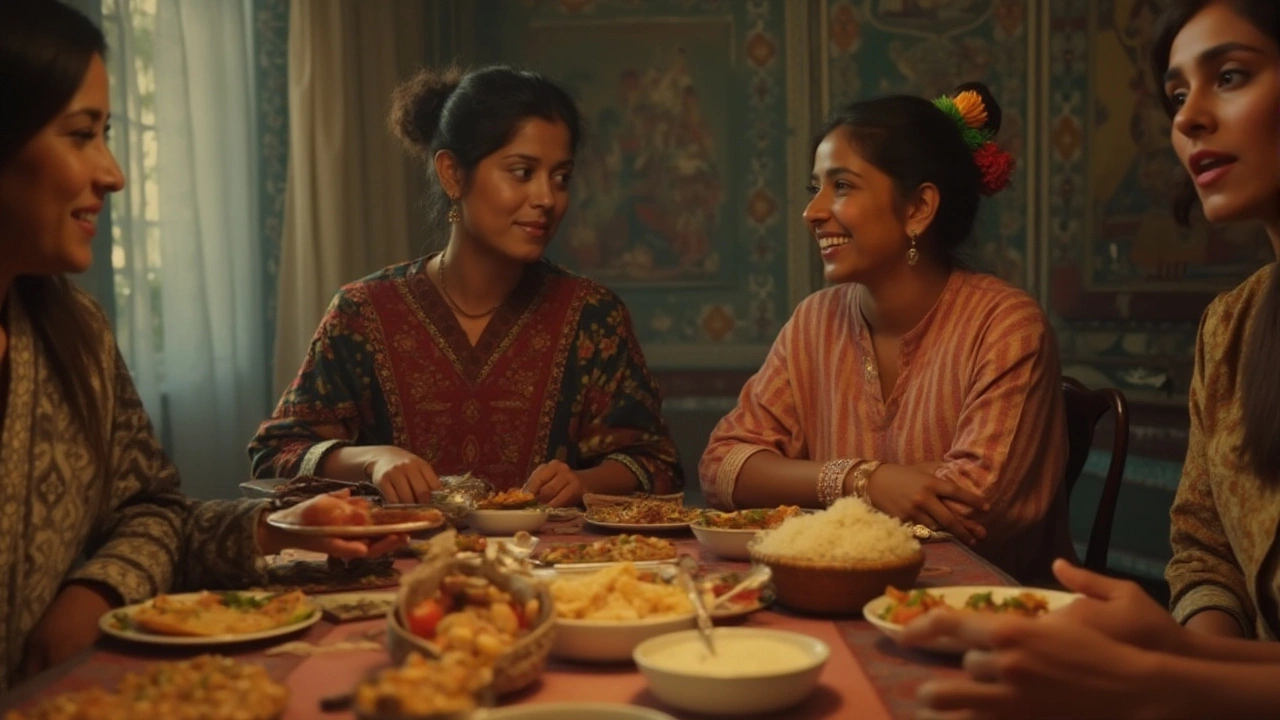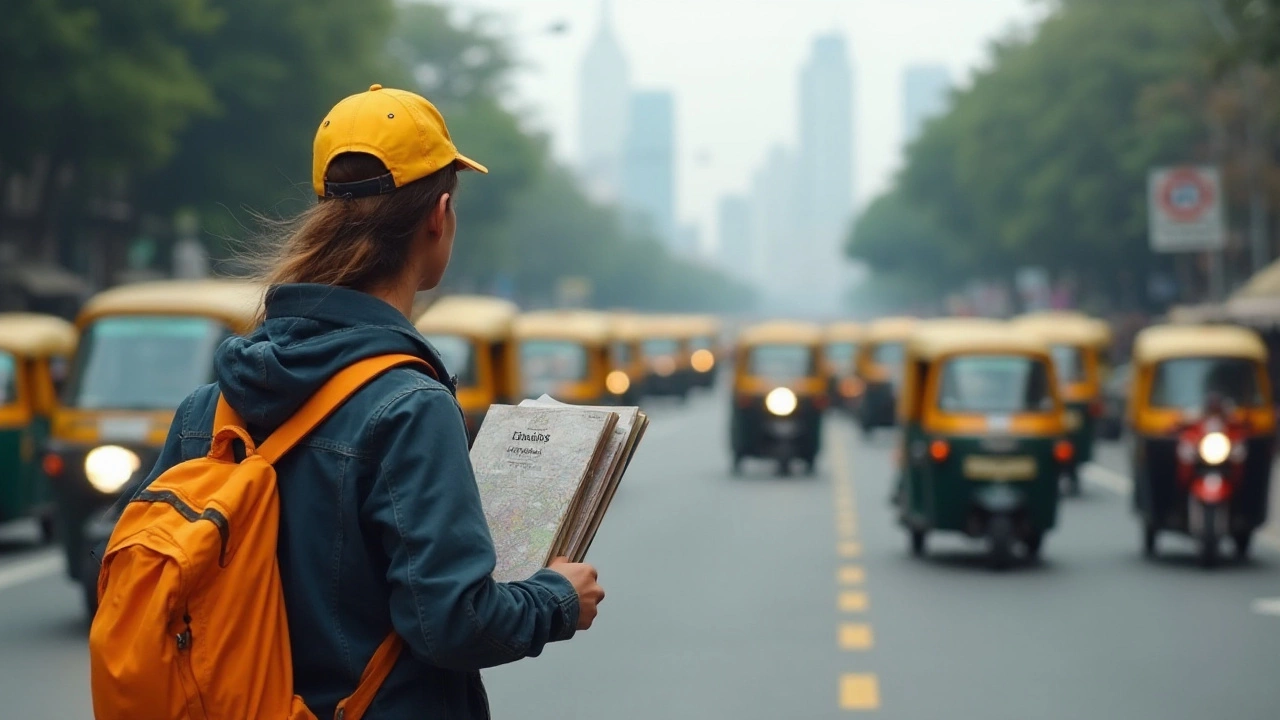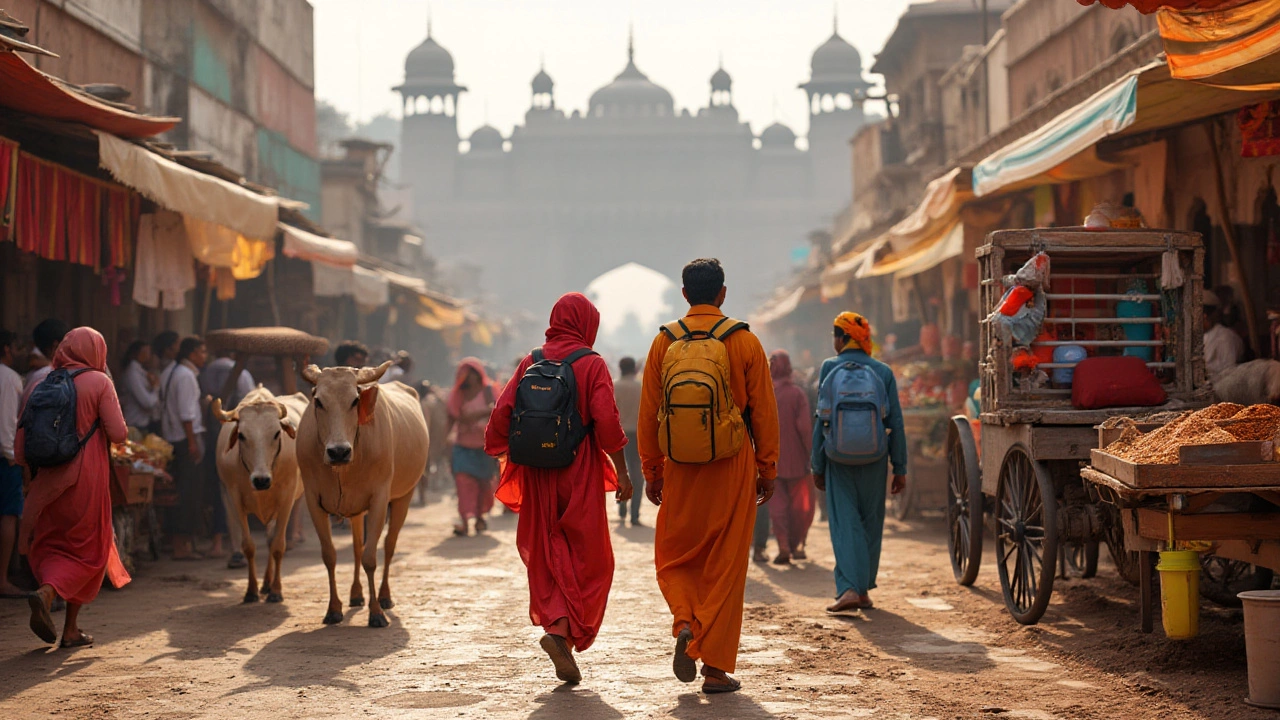India, with its vibrant culture, ancient landmarks, and bustling markets, is a destination that tempts and fascinates travelers from across the globe. For US citizens, however, navigating this beautiful chaos requires a certain level of preparation and awareness. Understanding what to expect and how to handle various scenarios ensures your journey is both safe and enjoyable.
While travel advisories can sometimes paint an overly alarming picture, the key lies in staying informed and cautious. By being aware of local customs, planning ahead for accommodations, and keeping health and safety as priorities, your Indian adventure can be a memorable and enriching experience. Dive into this guide for insights and practical tips to make the most of your trip to the diverse land of India.
- Understanding the Current Safety Situation
- Health and Safety Tips
- Budget Travel Insights
- Cultural Tips for Travelers
Understanding the Current Safety Situation
Traveling to India, a nation brimming with cultural diversity and historical treasures, presents a unique set of challenges, especially when considering the safety factor for US citizens. It's essential to approach these challenges with a well-informed perspective. Over recent years, India has made great strides in improving safety conditions for tourists. However, it still requires vigilance to navigate through potential risks effectively. Reports indicate that urban areas, particularly in major cities like Delhi, Mumbai, and Bangalore, continue to face issues such as petty theft and occasional scams. It is imperative for travelers to remain cautious, especially when moving around crowded spaces like bazaars and train stations, where most pickpockets are known to operate. Having your belongings secure and using money belts or anti-theft bags can often mitigate such risks quite effectively.
The US Department of State periodically releases travel advisories and it is advisable for travelers to keep themselves updated with the latest travel advisories before planning a visit. Usually marked by levels, these advisories provide insightful details regarding areas that should be avoided or situations that demand higher caution. Currently, travelers are urged to exercise increased caution due to concerns related to crime and civil unrest in certain regions. However, it’s worthwhile to note that most areas frequented by tourists remain unaffected by such unrest, thus allowing uninterrupted exploration of majestic landmarks like the Taj Mahal and serene backwaters of Kerala.
"Security is mostly a superstition. Life is either a daring adventure or nothing." – Helen Keller
On top of safety in physical spaces, digital safety is another aspect deserving attention. Travelers are advised to use secure and trusted Wi-Fi networks. Refrain from accessing sensitive personal information in public areas, and use VPN services to enhance online security. This way, you can ensure your personal data remains protected. Contact your mobile carrier for international plans that could provide secure internet access. In terms of health safety, particularly in a post-pandemic era, keeping an eye out for local health advisories and guidelines is critical. Many parts of India have different climatic zones which can influence health conditions like food-borne illnesses or vector-borne diseases. Vaccination is a proactive approach and should be part of your travel preparation checklist to minimize health risks.
For many travelers, solo or group settings might determine varied levels of safety perceptions. India tends to be more welcoming for group travelers due to the availability of organized tours and guided travel packages. Traveling solo can be equally rewarding, offering more freedom, but should be done with a friend or a reputable guide at least until you feel comfortable navigating on your own. Leverage technology by utilizing travel apps to connect with fellow travelers globally for advice and camaraderie. Following these practical measures and paying heed to seasoned advice can greatly enhance the safety of your travel experience when visiting this vibrant land.

Health and Safety Tips
When it comes to India travel safety, a little preparation can go a long way in ensuring that your visit is both secure and enjoyable. One of the foremost considerations is health, especially given India's diverse climate and unique cuisine. Vaccinations are highly recommended, and it’s wise to consult with your healthcare provider six to eight weeks before your trip. Vaccines for hepatitis A, typhoid, and, depending on your itinerary, malaria, can safeguard you against some tropical diseases. Staying hydrated is crucial, but it's important to drink only bottled or purified water. Delhi Belly is a common ailment among outsiders, so be cautious about street food, tempting as it may be.
Personal safety is equally significant. Although many travelers experience kindness and hospitality throughout India, it's advisable to remain vigilant, especially in crowded places like markets and bus stations. Stick to well-lit areas at night, and use registered taxis or rideshare services whenever possible. Women travelers might consider dressing modestly to blend in and respect the cultural norms. The US Department of State advises travelers to India to be mindful of their belongings, avoid demonstrations, and stay updated on local news.
According to the CDC, 'Travelers should avoid mosquito bites to prevent diseases such as dengue and malaria.'
An aspect often overlooked by tourists is the air quality in certain Indian cities. Travelers with respiratory issues should take note that cities like Delhi can have high pollution levels at certain times of the year. Wearing a mask, especially if you’re sensitive to polluted air, is a good precaution. Seasonal weather also plays a role – the monsoon season can affect travel plans, so it's best to have flexible arrangements. Carry essential medications, as while pharmacies are abundant, having your own supply reduces the risk of getting unfamiliar brands.
Overall, the goal is to immerse in the beauty and vibrancy of India without compromising on your health or safety. Being conscious about potential risks and armed with the information can lead to a truly rewarding experience. From the hypnotic rhythm of a Kathakali dance performance to the serene backwaters of Kerala, India offers so much, and staying safe allows you to enjoy it all. Prioritizing both health and safety prepares you to relish in the exotic while avoiding common pitfalls.

Budget Travel Insights
Traveling to India on a budget is completely possible, and it can be a deeply rewarding adventure. There are plenty of benefits that come with smart planning, and understanding the true cost dynamics of the local economy greatly aids in managing expenses. One can start by booking flights during the off-peak seasons such as the monsoon months of June to September, when prices tend to dip significantly. Exploring various accommodations, from hostels to homestays, can provide an authentic experience while keeping costs low. It's remarkable how India caters to every budget, sometimes offering an experience worth far more than the expense incurred.
Transportation within India presents numerous options, making it budget-friendly if you know where to look. The vast and intricate network of trains is a classic choice, giving travelers a chance to view the picturesque landscapes of this rich country. Buses are another economical option, especially for shorter distances. However, those wanting quick urban transport can opt for auto-rickshaws or the metro systems present in cities like Delhi and Mumbai. Always agree on a fare before setting off if you're not using a metered service, ensuring no unexpected surprises.
Food in India is another avenue where budget travelers can save substantially while still indulging in the culinary diversity that defines Indian cuisine. Street food is a beloved staple in cities like Delhi and Kolkata, renowned for their flavors and affordability. However, it's the small local eateries or 'dhabas' that give the closest taste of true Indian culture, often providing large portions at very reasonable prices. Safety in food is crucial, and sticking to food establishments that appear busy has often proven a wise choice.
“A great Indian culinary experience doesn't have to come with an inflated price tag. It’s about authentic taste, accessibility, and experience itself,” – Indian Food Critic and Travel Author.
For activities and sightseeing, India spoils visitors with numerous attractions that are either free or inexpensive. Visiting historical sites like the Red Fort or exploring the spiritual ghats of Varanasi gives travelers a glimpse into the country’s soul. Museums may charge minimal fees, and exploring local markets is usually free while offering the chance to understand India's vibrant culture up close. Engaging with locals or opting for DIY tours can enhance your experience without putting a dent in your wallet.
An important aspect of budget travel in India is understanding currency exchange and ensuring you get the best rates possible. Large cities have plenty of currency exchange services, but it’s beneficial to compare rates or use online options where feasible, minimizing transaction fees. With digital payment methods becoming increasingly common, apps like PayTM or Google Pay can help in managing expenditures, keeping your transactions both efficient and secure.

Cultural Tips for Travelers
India's cultural richness and diversity are what make it such a unique travel destination. For US citizens traveling to India, understanding these cultural nuances is key to having a meaningful and respectful visit. Start by learning a few basic greetings in Hindi, the most widely spoken language, or in the regional dialect where you are traveling. A simple 'Namaste' with folded hands shows respect and is appreciated by locals. While English is widely understood in urban areas, making an effort to speak in the local language can lead to warmer interactions.
One of the most important aspects of Indian culture is its rich tradition of hospitality. Guests are often treated with the utmost respect, but it's important to reciprocate that respect by being mindful of local customs. For instance, when visiting religious sites, dress modestly, cover your head if required, and remove your shoes before entering. Remember to seek permission before taking photographs, especially in sacred places. Indians also place a high value on food and sharing meals, and it's considered polite to accept when offered. Eating with your right hand is customary, and it's best to avoid using your left hand as it is traditionally seen as unclean.
Understanding Local Etiquettes
In India, social hierarchy and family are central to the daily life. It is common to address elders with respect by adding '-ji' to their names or addressing them as 'Aunty' or 'Uncle'. When engaging in conversations, it is important to maintain appropriate personal space as crowding can be seen as intrusive. Understanding personal boundaries will help you navigate social interactions smoothly. Also, it's essential to be patient and adaptable since time perceptions might differ, and punctuality is not always seen with the same urgency as in the West. In some cases, legal drinking age is strict and alcohol is not permissible in certain states, so check local laws.
The World Travel Guide notes, "In India, it’s the subtleties that define the culture. A nod can mean a yes, but sometimes it means you’re being listened to with interest."
Understanding India's fascination with traditional attire and festivals goes a long way in appreciating the cultural fabric. During festivals like Diwali and Holi, join in the celebrations with enthusiasm, but remember to respect traditions. Traditional dress codes may be expected, and joining in such practices can enrich your experience. When you immerse yourself in the myriad of festivals, you gain a glimpse into the soul of Indian culture. Many travelers find that attending these festivals is a highlight of their visit, offering insights that go beyond what any guidebook can provide. When it's time to purchase souvenirs, remember bargaining is common practice in local markets, but ensure the interactions remain respectful and enjoyable.
Respect and Awareness
The concept of respect permeates many layers of society. For safe travel in India, understanding and respecting local traditions and beliefs is paramount. Whether it's covering your head while entering a Sikh temple, removing footwear before entering someone’s home, or accepting food offerings graciously, these gestures show you honour the culture. It's equally important to be cautious and dress modestly, especially in conservative regions, to avoid unwanted attention and show respect for local customs.
